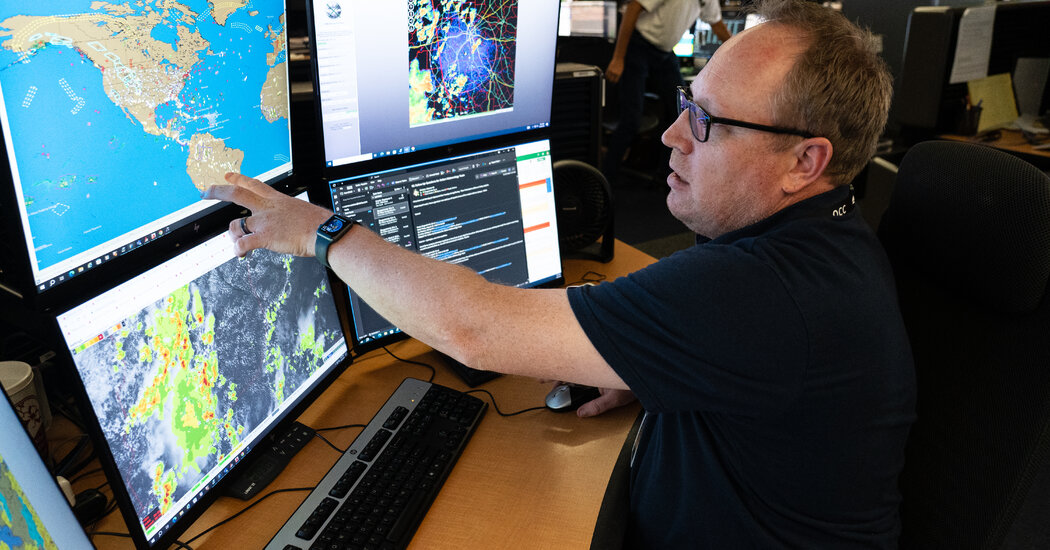From thunderstorms and limited visibility to scorching temperatures and turbulence, the weather dictates when and where planes can fly. Severe weather is the leading cause of air travel disruptions in the United States.
Aviation meteorologists plan for and around difficult conditions, crafting weather forecasts used to determine the nuances of flights, from altitude to optimal routes. They play an essential role in ensuring travelers get to their destinations safely and efficiently.
Several major domestic carriers, including Delta Air Lines, have in-house meteorologists who monitor global weather 24 hours a day. Delta has 28 meteorologists on staff — the largest team of any airline, it declares — who sit in the carrier’s Operations and Customer Center, alongside flight dispatchers, customer service agents and hundreds of other staffers, at its headquarters in Atlanta.
In this cavernous and screen-filled room, Warren Weston, Delta’s lead meteorologist, recently spoke about the importance of data, the difference between surface weather and upper-air hazards, and how even one degree of temperature can change a flight plan. The conversation has been edited and condensed for clarity.
What are your team’s main responsibilities?
The team provides weather briefings covering Delta’s global operations four times a day.
We write our own forecasts for the 10 main Delta hubs in the United States. One of the things that makes us unique is that we are the sole weather provider for Delta. Sometimes our timing will differ from that of the National Weather Service; we might be calling for a slower changeover from snow to rain, for example. The Weather Service doesn’t have to see the people they write these forecasts for, but we have the flight dispatchers right here.
It’s a 30-hour forecast updated every six hours. I guess the moral of the story is data, data, data. We rely on government and university models, and then proprietary in-house tools.
What kind of weather conditions are analyzed?
This is completely different than the forecast that you would see on your smartphone app. It is a special aviation forecast giving the dispatchers and the pilots information about variables like wind speed and direction.
We are in two modes here: surface weather and upper air. Surface conditions are visibility, precipitation and clouds. On the upper-air side, we are mostly watching for turbulence, the primary threat. We’re also looking for volcanic ash (a rock mixture debris…
Click Here to Read the Full Original Article at NYT > Travel…
